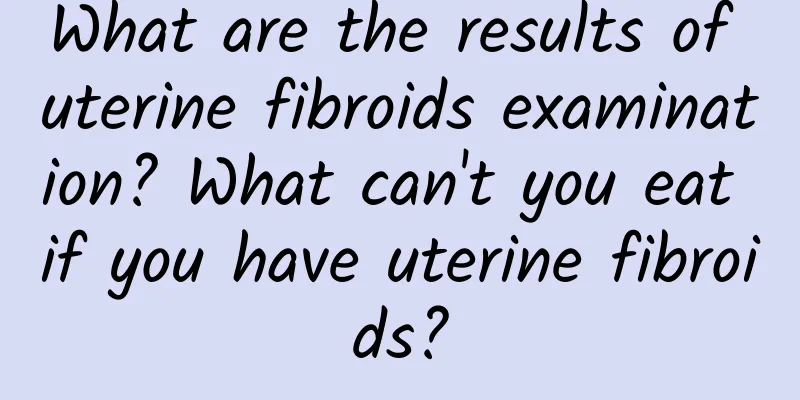What are the results of uterine fibroids examination? What can't you eat if you have uterine fibroids?

|
The ideal hysterography for uterine fibroids can not only show the number of submucosal fibroids, but also locate them. Hysteroscopy can also remove small submucosal fibroids at the same time. So, what are the results of gynecological examinations for uterine fibroids? What foods can't be eaten with uterine fibroids? Uterine fibroids are one of the most common benign tumors in the female reproductive organs and one of the most common tumors in the human body. They are also called fibroids and uterine fibroids. Because uterine fibroids are mainly composed of the proliferation of uterine smooth muscle cells and a small amount of fibrous connective tissue exists as supporting tissue, they are more accurately called uterine leiomyoma. Uterine fibroids are usually easy to make a preliminary diagnosis based on medical history, symptoms, and physical examination. Some patients have typical symptoms, but some patients have no symptoms. The uterus is enlarged, the surface is irregular and protruding, and it is hard. Large fibroids can be felt in the abdomen. When the submucosal fibroid protrudes into the vagina, a purple-red smooth ring-shaped tumor can be seen. If it is a fibroid, the uterus is soft and tender. Uterine fibroids Gynecological examinations reveal irregular or uniform uterine growth, such as subserous fibroids on the surface of the uterus, which can touch single or multiple nodules protruding and hard; submucosal fibroids sometimes enlarge the uterine ostium, through which the lower end of the intrauterine fibroid can be touched; if it hangs in the vagina, the tumor body can be seen and the pedicle can be touched. Because uterine fibroids grow rapidly, different degenerations will occur when the blood supply is poor. The larger the fibroids, the more severe the ischemia, and the more secondary degenerations. First of all, you should pay special attention to your daily diet. What foods can't you eat with uterine fibroids? 1. Avoid eating foods that are hot, blood-clotting, or contain hormones, such as longan, red dates, donkey-hide gelatin, and royal jelly. Eat a light diet and avoid eating irritating foods such as mutton, shrimp, crab, eel, salted fish, and black fish. 3. Avoid spicy foods and drinks such as chili peppers, peppercorns, raw onions, raw garlic, and white wine. 4. Eat more lean meat, chicken, eggs, quail eggs, crucian carp, turtle, white fish, cabbage, asparagus, celery, spinach, cucumber, winter melon, mushrooms, tofu, kelp, seaweed, fruits, etc. |
>>: How to treat multiple uterine fibroids How to use medication for multiple uterine fibroids
Recommend
Explore the symptoms of uterine fibroids
Among the many female diseases, uterine fibroids ...
What is pregnancy complicated with ovarian cysts?
Pregnancy complicated with ovarian cyst refers to...
Measures to prevent dysmenorrhea in women!
Menstruation is a physiological phenomenon that e...
At what age do women usually reach menopause?
Women generally reach menopause between the ages ...
Tuberculous pelvic inflammatory disease may cause lower abdominal pain
Tuberculous pelvic inflammatory disease may cause...
The toxins are leaving! Detoxify and nourish the liver in spring, female Chinese medicine recommends these 2 cups
The air we breathe, the food we eat, and even the...
To prevent dysmenorrhea, we must take good measures
Dysmenorrhea is a phenomenon that most women will...
What medicine to take for cervicitis
What are the symptoms of cervicitis? Abnormal leu...
Is pelvic peritonitis expensive to treat?
Once pelvic peritonitis occurs, it must be treate...
Why everyone from Olympic athletes to your grandma needs to squat
We often have friends or patients tell me that th...
What are the main measures to prevent dysmenorrhea?
Dysmenorrhea is a common disease in life, and mos...
Women should know more about the symptoms of cervicitis
The clinical incidence of cervicitis is very high...
Are postmenopausal pelvic fluid masses benign?
Postmenopausal pelvic fluid masses may be benign,...
Slimming and beautiful legs with hand scraping to relieve lower limb swelling
The summer is hot and many women wear hot pants a...
What are the causes of acute cervicitis?
Cervicitis is a common gynecological disease, but...









